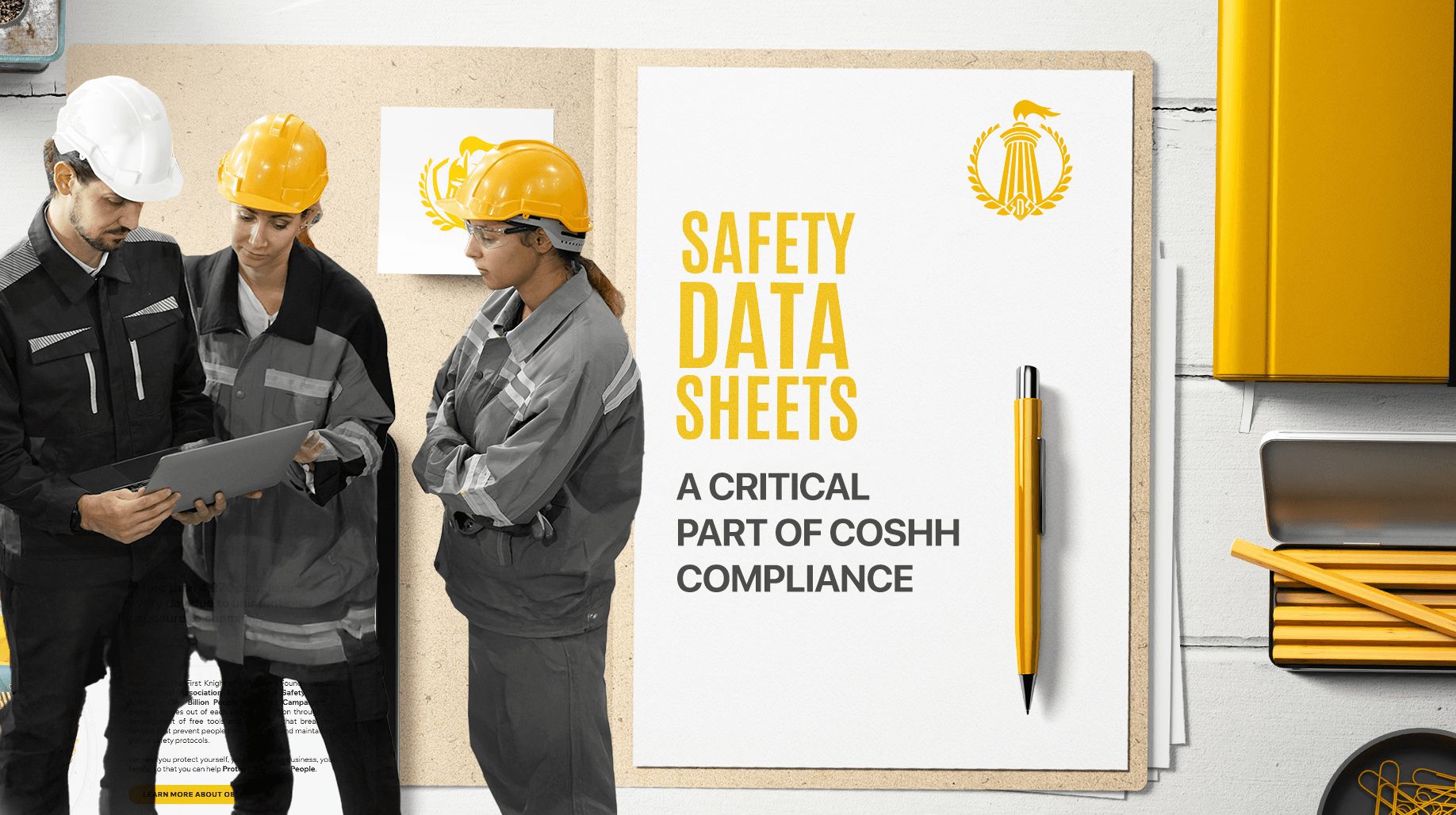
A Safety Data Sheet, or SDS, is more than a regulatory requirement. It is a practical document that protects people from the risks posed by hazardous substances. Under the Control of Substances Hazardous to Health (COSHH) Regulations, businesses have a duty to ensure that SDSs are accessible, accurate, and actively used. Whether on a construction site, in a lab, or on the factory floor, this document should be the first port of call before anyone handles a chemical.
Manufacturers and importers must prepare SDSs for hazardous products and provide them when requested. Ignoring this obligation can expose workers to harm and leave businesses vulnerable to legal action or operational setbacks.

A Safety Data Sheet, or SDS, is more than a regulatory requirement. It is a practical document that protects people from the risks posed by hazardous substances. Under the Control of Substances Hazardous to Health (COSHH) Regulations, businesses have a duty to ensure that SDSs are accessible, accurate, and actively used. Whether on a construction site, in a lab, or on the factory floor, this document should be the first port of call before anyone handles a chemical.
Manufacturers and importers must prepare SDSs for hazardous products and provide them when requested. Ignoring this obligation can expose workers to harm and leave businesses vulnerable to legal action or operational setbacks.
An SDS gives a clear and detailed overview of a hazardous chemical. It includes information about the manufacturer, the ingredients, and the physical and chemical properties. It also outlines what to do in the event of a fire, a spill, or direct contact with the substance.
Emergency contact numbers are usually provided, along with instructions for safe handling and storage. These sheets follow a standard format to ensure consistency across suppliers and industries. By offering a common reference point, SDSs help everyone in the workplace understand the risk and act accordingly.
Safety Data Sheets help employers and workers make informed decisions. They do this in three main ways.
First, they identify the specific risks associated with a substance. This might include dangers such as flammability, toxicity, or corrosive effects. Understanding these hazards is the foundation of good risk management.
Second, SDSs help with selecting the right control measures. For instance, the document might recommend a certain type of glove, a specific ventilation setup, or storage away from other chemicals.
Third, they provide a basis for training and communication. By referring to the SDS during briefings or toolbox talks, teams can ensure everyone understands what the substance is and how to handle it properly.
Before using any chemical, take time to read the SDS. Focus on the sections that describe hazards, handling guidance, protective equipment, and first aid. Do not assume the product is safe just because you have used it before. Changes in formulation, storage, or use can all affect the level of risk.
Follow the instructions as written. If the sheet recommends a specific kind of mask or states the need for eye protection, those are not optional. Store chemicals as advised and dispose of them according to the guidance provided.
Make sure everyone involved in handling the substance is familiar with the SDS. It should not be treated as a background document but as an everyday tool.
An out-of-date SDS can cause more harm than good. Chemical compositions change. So do scientific understandings of risk, and the regulations that govern classification and labelling. If your document is old, it may not reflect the current risk or the appropriate response.
Your internal procedures may also evolve. For example, you might change the way chemicals are stored or introduce new equipment that affects handling. The SDS should support these updates, not lag behind them.
Regular checks and updates ensure that the information you rely on is accurate and useful. That keeps your COSHH system effective.
If you are using a chemical and the SDS is missing, stop and contact the manufacturer or supplier. You are entitled to this information. Until it arrives, treat the substance as a high-risk material.
Use the maximum level of protection available. Keep the substance isolated. Avoid unnecessary exposure, and do not assume it can be used safely without proper guidance. It is better to delay the task than to proceed without the facts.
2025 © Copyright International Safety Data Sheet Services
To continue, please log in or Register for your free account
To continue, please log in or Register for your free account